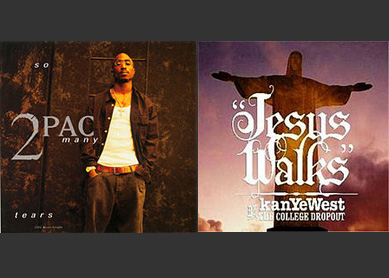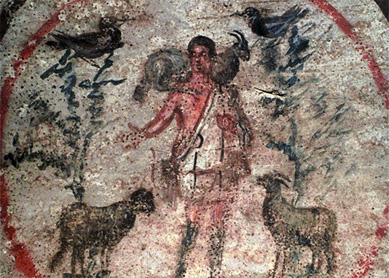Ps 23 appears in numerous cultural contexts, from public discourse to a vast array of artistic interpretations in classical and popular music, literature, film, and art. A simple search on Google, YouTube, and Wikipedia reveals the breadth of the psalm’s popularity. Real-life uses of the text occur commonly at funerals, as was the case at Whitney Houston’s memorial. Likewise, President George W. Bush cited part of Ps 23 in his speech to the nation on September 11, 2001. Two similar artistic examples are the film Titanic, in which a priest reads the psalm as the ship is sinking, and John Wayne’s Rooster Cogburn, in which the female protagonist recites the biblical text in the face of her attacker. In these contexts, the passage is used straightforwardly and uncritically to inspire hope and trust in difficult circumstances, as was presumably the case in the psalm’s original setting. Perhaps this expression of confidence in divine protection and blessing accounts for the psalm’s continued appeal.
The majority of artistic references, however, interact with the psalm in more subtle and nuanced ways. For instance, Coolio’s song “Gangsta’s Paradise,” Tupac Shakur’s “So Many Tears,” and Kanye West’s “Jesus Walks” refer to “the valley of the shadow of death” to signify the dangers of life on inner-city streets. While Coolio rejects the hope present in the biblical text (“I take a look at my life and realize there’s nothin’ left”), as does Tupac, West holds out that the shepherd—Jesus—might be able to help him, though he is not nearly as optimistic as the biblical writer. All three rappers have essentially turned the biblical psalm of trust into one of lament and sadness, and they employed it in a call for social justice. Although Coolio “says prayers in the streetlight,” he ultimately relies on himself, not God, for any potential liberation. This shift is indicative of American individualism and self-reliance.
In film, Clint Eastwood’s Pale Rider also features the interplay of hope and doubting the divine. As a young girl buries her dog killed by the villains, she recites Ps 23 interspersing her own commentary: “‘I shall not want’—but I do want . . . ‘He restoreth my soul’—but they killed my dog . . . ‘I shall fear no evil’—but I am afraid . . . ‘Thy loving kindness and mercy shall follow me’—if you exist.”
The line “my cup runneth over” has also found its way into a variety of songs—the image of a full cup is more accessible, perhaps, than lying down in green pastures or having one’s head anointed with oil. Rapper Jay-Z uses it to refer to financial gain (“Can’t Knock the Hustle”), while Eminem’s “cup runneth over” with anger and disappointment (“Rabbit Run”). Of course, neither performer attributes his situation to a divine hand.
The popularity of Ps 23 in the Christian tradition—perhaps in part because of its view of God as a shepherd, which links this Hebrew Bible passage with depictions of Jesus in the New Testament—has contributed to the psalm’s appeal in Western culture. Moreover, its words of fulfillment, peace, and tranquility (Ps 1-3) side by side with the acknowledgement of life’s dangers—the valley of death and the presence of enemies—have helped transform it into a cultural icon that powerfully and poignantly captures universal human sentiments.


